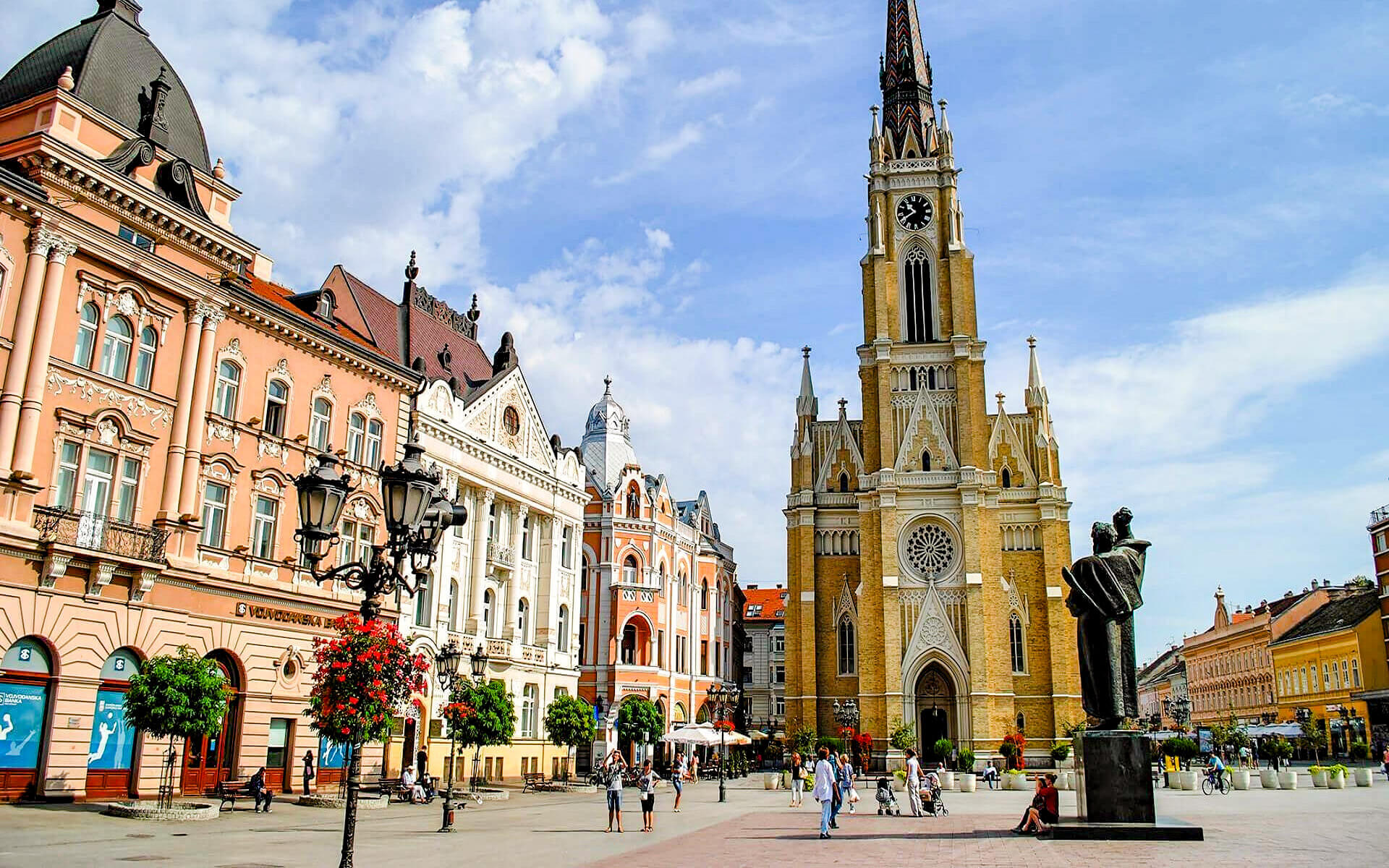Since 2000, the number of visitors visiting Novi Sad has gradually increased. Every year in early July, during the annual EXIT music festival, the city is overrun with young people from all over Europe. Over 200,000 people attended the event in 2008, putting Novi Sad on the map of summer festivals both in Europe and abroad. Aside from the EXIT festival, the Novi Sad Fair brings many business people to the city; in May, the city hosts the largest agricultural exhibition in the area, which attracted 600,000 visitors in 2005. There is also a tourist port at Varadin Bridge in the city center that welcomes Danube river cruise vessels from all around Europe.
The Petrovaradin Fortress, which overlooks the city and offers picturesque views of the city, is the most well-known building in Novi Sad. Aside from the fortress, there is also the ancient area of Stari Grad, which has several monuments, museums, caffes, restaurants, and stores. There is also a National Park of Fruška Gora nearby, around 20 kilometers (12 miles) from the city center.
Novi Sad is Serbia’s second cultural center (after Belgrade), and municipal authorities are working to make the city more appealing to a variety of cultural events and music performances. Since 2000, Novi Sad has hosted the EXIT festival, the largest music summer festival in Serbia and the vicinity, as well as Serbia’s sole festival of alternative and contemporary theatre. Other notable cultural events include the Zmaj Children Games, the Days of Brazil – Novi Sad Samba Carnival, the International Novi Sad Literature Festival, Sterijino pozorje, the Novi Sad Jazz Festival, and many more.
Apart from the Serbian National Theatre, the most notable theatres include the Youth Theatre, the Cultural Centre of Novi Sad, and the Novi Sad Theatre. The Novi Sad Synagogue also hosts a number of cultural events throughout the city. Offset of the Serbian Academy of Science and Art, Library of Matica Srpska, Novi Sad City Library, and Azbukum are among the city’s other cultural institutions. The city is also home to Vojvodina’s cultural institutions, including the Vojvodina Academy of Sciences and Arts and the Vojvodina Archive, which has numerous records from Vojvodina going back to 1565.
The city contains a number of museums and galleries, both public and private. The most well-known museum in the city is the Museum of Vojvodina, which was created in 1847 by Matica srpska and has a permanent collection of Serbian culture and life in Vojvodina throughout history. The Museum of Novi Sad in Petrovaradin Fortress has a permanent collection of fortress history.
Matica Srpska Gallery is the city’s largest and most prestigious gallery, with two locations in the city center. There is also The Gallery of Fine Arts – Rajko Mamuzić Gift Collection and The Pavle Beljanski Memorial Collection, which has one of the largest collections of Serbian art from the 1900s to the 1970s.


